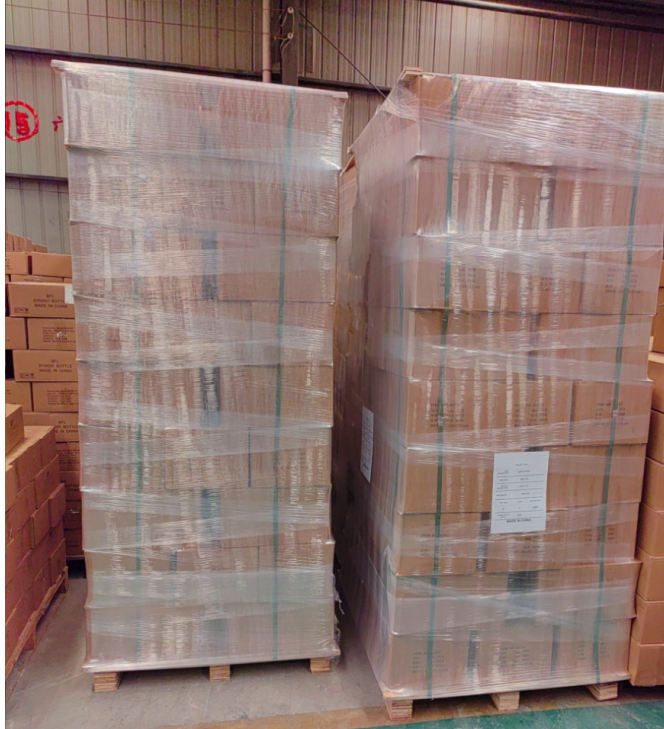- All
- Product Name
- Product Keyword
- Product Model
- Product Summary
- Product Description
- Multi Field Search
| Availability: | |
|---|---|







Precision Threaded Clear Glass Perfume Bottle(5ml & 10ml)
Engineered for laboratory precision and boutique aesthetics, CrystalVial™ jars set the standard for clarity and reliability in small-volume storage. These round-mouth threaded bottles feature seamless Type I borosilicate glass with optical-grade transparency (>92% light transmission), ensuring uncompromised visibility of contents. The computer-calibrated screw threads achieve hermetic seals with polypropylene caps, making them ideal for pharmaceutical samples, essential oil blends, skincare serums, and scientific reagents where purity and precision coexist.
Packaging Solution
Pallet + Cartons
→ Retail-ready | Weatherproof | Tamper-evident

FAQ
1.How do you prevent micro-leaks in screw-thread designs when storing volatile organic compounds (VOCs) like limonene or ethanol?
Borosilicate’s low alkali content (<5% Na₂O) reduces ion exchange by 80% versus soda-lime glass; ICP-MS analyses show <0.005 ppm silica/boron leaching into pH 1.8 solutions after 180 days. The material’s hydrolytic Class I resistance (per ISO 4802) prevents surface delamination that causes particle shedding in parenteral products—critical for FDA 21 CFR Part 211 compliance.
2.Why choose borosilicate over soda-lime glass for acidic/cationic formulations (e.g., 10% glycolic acid or zinc solutions)?
Borosilicate’s low alkali content (<5% Na₂O) reduces ion exchange by 80% versus soda-lime glass; ICP-MS analyses show <0.005 ppm silica/boron leaching into pH 1.8 solutions after 180 days. The material’s hydrolytic Class I resistance (per ISO 4802) prevents surface delamination that causes particle shedding in parenteral products—critical for FDA 21 CFR Part 211 compliance.
3.Can labels withstand repeated sterilization without adhesive failure or information loss?
The plasma-etched surface generates nano-scale pores that mechanically interlock with adhesive polymers, achieving peel strength >12 N/25mm after 50 autoclave cycles (121°C/15psi). Laser-markable ceramic labels fused at 650°C provide indelible batch coding resistant to IPA scrubbing, ethylene oxide, and UV-C exposure—ensuring traceability per EU Annex 11 regulations.
4.Doesn’t glass recycling downcycle clear bottles due to contamination risks in MRF streams?
We embed near-infrared-transparent cerium oxide tracers detectable by AI sorters at 98.7% accuracy—diverting bottles into closed-loop recycling. Lifecycle assessments prove reuse + recycling achieves 0.08 kg CO₂e/bottle versus 0.24 kg for virgin plastic vials. Partner facilities guarantee 90% cullet purity for pharmaceutical remanufacturing.
Precision Threaded Clear Glass Perfume Bottle(5ml & 10ml)
Engineered for laboratory precision and boutique aesthetics, CrystalVial™ jars set the standard for clarity and reliability in small-volume storage. These round-mouth threaded bottles feature seamless Type I borosilicate glass with optical-grade transparency (>92% light transmission), ensuring uncompromised visibility of contents. The computer-calibrated screw threads achieve hermetic seals with polypropylene caps, making them ideal for pharmaceutical samples, essential oil blends, skincare serums, and scientific reagents where purity and precision coexist.
Packaging Solution
Pallet + Cartons
→ Retail-ready | Weatherproof | Tamper-evident

FAQ
1.How do you prevent micro-leaks in screw-thread designs when storing volatile organic compounds (VOCs) like limonene or ethanol?
Borosilicate’s low alkali content (<5% Na₂O) reduces ion exchange by 80% versus soda-lime glass; ICP-MS analyses show <0.005 ppm silica/boron leaching into pH 1.8 solutions after 180 days. The material’s hydrolytic Class I resistance (per ISO 4802) prevents surface delamination that causes particle shedding in parenteral products—critical for FDA 21 CFR Part 211 compliance.
2.Why choose borosilicate over soda-lime glass for acidic/cationic formulations (e.g., 10% glycolic acid or zinc solutions)?
Borosilicate’s low alkali content (<5% Na₂O) reduces ion exchange by 80% versus soda-lime glass; ICP-MS analyses show <0.005 ppm silica/boron leaching into pH 1.8 solutions after 180 days. The material’s hydrolytic Class I resistance (per ISO 4802) prevents surface delamination that causes particle shedding in parenteral products—critical for FDA 21 CFR Part 211 compliance.
3.Can labels withstand repeated sterilization without adhesive failure or information loss?
The plasma-etched surface generates nano-scale pores that mechanically interlock with adhesive polymers, achieving peel strength >12 N/25mm after 50 autoclave cycles (121°C/15psi). Laser-markable ceramic labels fused at 650°C provide indelible batch coding resistant to IPA scrubbing, ethylene oxide, and UV-C exposure—ensuring traceability per EU Annex 11 regulations.
4.Doesn’t glass recycling downcycle clear bottles due to contamination risks in MRF streams?
We embed near-infrared-transparent cerium oxide tracers detectable by AI sorters at 98.7% accuracy—diverting bottles into closed-loop recycling. Lifecycle assessments prove reuse + recycling achieves 0.08 kg CO₂e/bottle versus 0.24 kg for virgin plastic vials. Partner facilities guarantee 90% cullet purity for pharmaceutical remanufacturing.